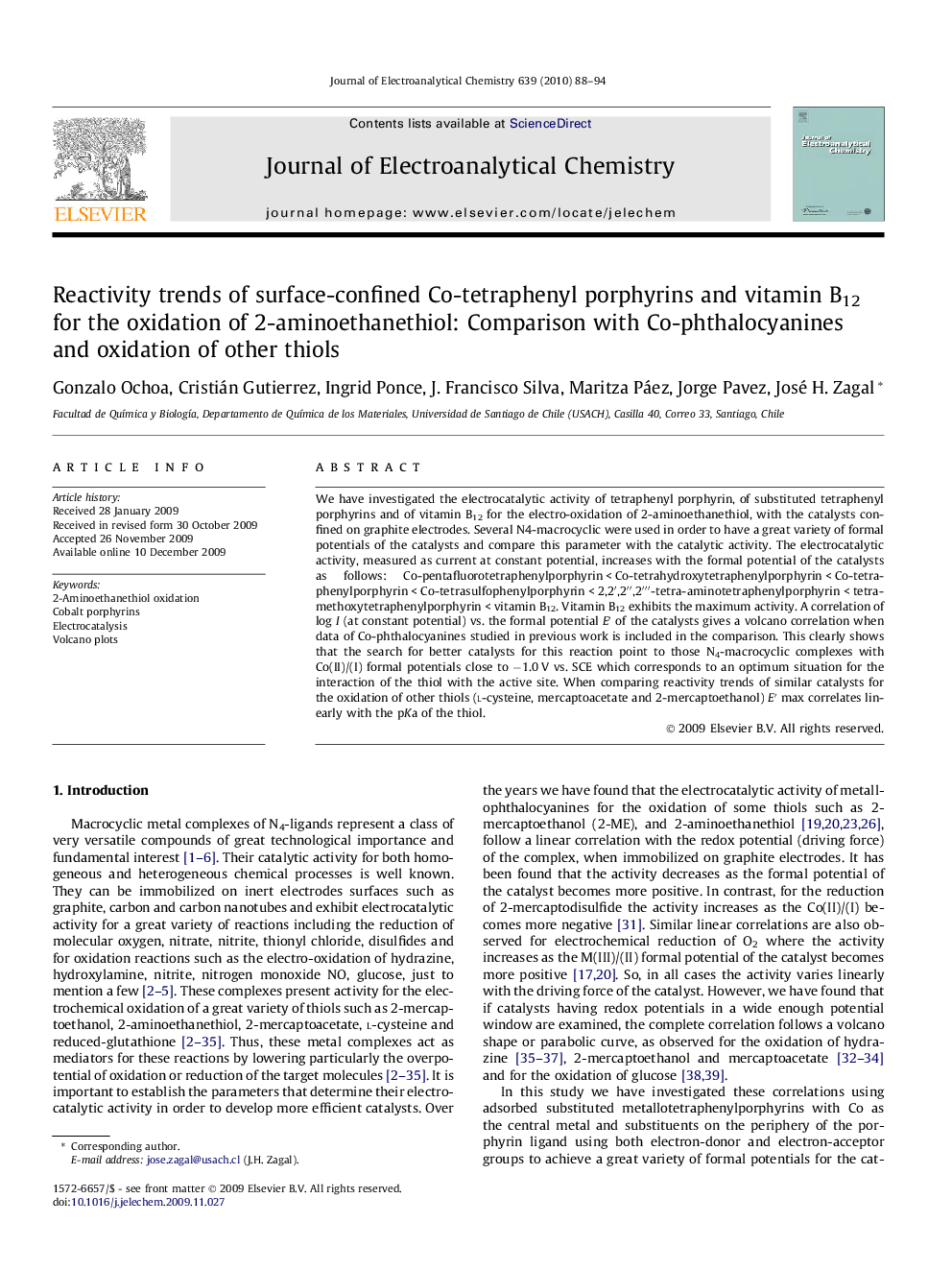| Article ID | Journal | Published Year | Pages | File Type |
|---|---|---|---|---|
| 220027 | Journal of Electroanalytical Chemistry | 2010 | 7 Pages |
We have investigated the electrocatalytic activity of tetraphenyl porphyrin, of substituted tetraphenyl porphyrins and of vitamin B12 for the electro-oxidation of 2-aminoethanethiol, with the catalysts confined on graphite electrodes. Several N4-macrocyclic were used in order to have a great variety of formal potentials of the catalysts and compare this parameter with the catalytic activity. The electrocatalytic activity, measured as current at constant potential, increases with the formal potential of the catalysts as follows: Co-pentafluorotetraphenylporphyrin < Co-tetrahydroxytetraphenylporphyrin < Co-tetraphenylporphyrin < Co-tetrasulfophenylporphyrin < 2,2′,2′′,2′′′-tetra-aminotetraphenylporphyrin < tetramethoxytetraphenylporphyrin < vitamin B12. Vitamin B12 exhibits the maximum activity. A correlation of log I (at constant potential) vs. the formal potential E′ of the catalysts gives a volcano correlation when data of Co-phthalocyanines studied in previous work is included in the comparison. This clearly shows that the search for better catalysts for this reaction point to those N4-macrocyclic complexes with Co(II)/(I) formal potentials close to −1.0 V vs. SCE which corresponds to an optimum situation for the interaction of the thiol with the active site. When comparing reactivity trends of similar catalysts for the oxidation of other thiols (l-cysteine, mercaptoacetate and 2-mercaptoethanol) E′ max correlates linearly with the pKa of the thiol.
